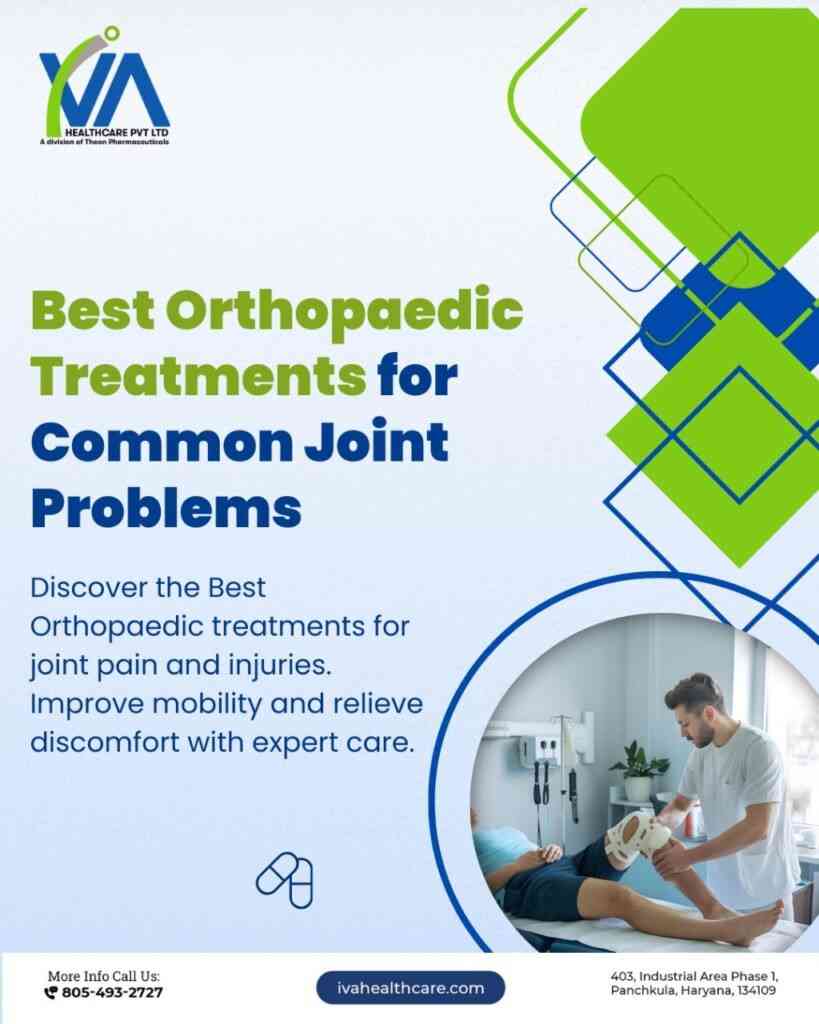


Discover the Best Orthopaedic treatments for joint pain and injuries. Improve mobility and relieve discomfort with expert care.
Joint pain and discomfort are issues faced by millions around the world, affecting the quality of life and limiting daily activities. The Best Orthopaedic treatments are vital for ensuring a healthy, active lifestyle. Whether caused by injury, aging, or other conditions like arthritis, proper orthopaedic care can make a significant difference. This article delves into some of the most common joint problems and the best treatment options available.
Understanding Common Joint Problems
Before we explore the best orthopaedic treatments, it’s essential to understand the nature of joint problems. Joint pain can stem from various causes, including inflammation, degeneration of cartilage, injury, and autoimmune diseases. Some of the most common joint problems include:
Osteoarthritis: A degenerative joint disease that wears away the cartilage, causing pain, stiffness, and swelling.
Rheumatoid Arthritis: An autoimmune condition that attacks the joints, leading to chronic inflammation.
Bursitis: Inflammation of the fluid-filled sacs (bursae) that cushion the joints.
Tendonitis: Inflammation of tendons, usually caused by overuse or repetitive motion.
Ligament Injuries: Tears or sprains in the ligaments surrounding the joints, often occurring in athletes.
Meniscus Tears: A common knee injury involving the cartilage, often seen in sports-related activities.
Dislocations: A joint becomes displaced due to trauma or injury, often requiring immediate attention.
Each of these joint problems requires a tailored treatment plan for optimal recovery.
Best Orthopaedic Treatments for Joint Problems
1. Physical Therapy and Rehabilitation
One of the most effective treatments for various joint conditions is physical therapy. A physical therapist develops customised exercises aimed at improving mobility, flexibility, and strength around the joint. This treatment can help relieve pain, restore joint function, and prevent further injury.
For conditions like osteoarthritis and tendonitis, physical therapy can delay the need for more invasive treatments, such as surgery. Rehabilitation exercises are crucial for recovery from joint surgeries, such as knee or hip replacements, helping patients regain strength and independence.
2. Medication Management
For many joint conditions, medications play a vital role in managing symptoms. The Best Orthopaedic approach involves a combination of anti-inflammatory drugs, pain relievers, and disease-modifying treatments.
Non-Steroidal Anti-Inflammatory Drugs (NSAIDs): These medications reduce inflammation and relieve pain, commonly prescribed for conditions like arthritis and bursitis.
Corticosteroids: These powerful anti-inflammatory drugs can be injected directly into the joint to reduce inflammation and pain in conditions like rheumatoid arthritis and osteoarthritis.
Disease-Modifying Antirheumatic Drugs (DMARDs): Used for rheumatoid arthritis, DMARDs slow down the disease progression by targeting the immune system’s response.
While medications are effective in controlling symptoms, they are often combined with other treatments for long-term management.
3. Surgical Interventions
When conservative treatments such as physical therapy and medications are not effective, surgical interventions may be necessary. Orthopaedic surgery has advanced significantly, offering minimally invasive techniques that reduce recovery time and improve outcomes.
Joint Replacement (Arthroplasty): One of the most common orthopaedic surgeries, joint replacement involves replacing the damaged joint with an artificial one, most frequently performed on the hip and knee joints. It is highly effective in reducing pain and restoring mobility.
Arthroscopy: A minimally invasive procedure used to diagnose and treat joint problems, such as meniscus tears and ligament injuries. A small camera is inserted into the joint, allowing the surgeon to repair damaged tissue without open surgery.
Ligament Reconstruction: For ligament injuries such as ACL (anterior cruciate ligament) tears, ligament reconstruction surgery restores stability to the knee and prevents further injury.
Fusion Surgery: In cases of severe arthritis or injury, joint fusion may be recommended to eliminate pain by permanently fusing the bones of the joint together. This is often done in the spine, ankle, or wrist.
4. Lifestyle Modifications
Sometimes, simple lifestyle changes can make a significant impact on joint health. Orthopaedic specialists often recommend weight management and low-impact exercises to relieve pressure on the joints and improve overall mobility.
Conclusion
Joint problems can be challenging to manage, but with the right orthopaedic care, relief is possible. Whether through physical therapy, medications, surgery, or lifestyle modifications, the Best Orthopaedic treatments provide effective solutions for joint pain and discomfort.
If you are looking for a trusted medicine company in Chandigarh to help you access the best treatments and products for joint health, it’s crucial to choose a reputable provider.
